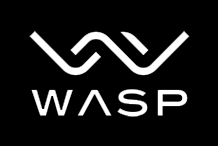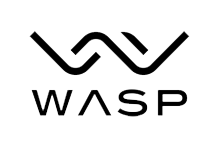
“When it comes to lead generation, you want to make a promise to the visitor and then make sure that you keep that promise” – Bob Ruffolo, Founder & CEO if IMPACT Branding & Design
Lead Generation is the new hot cake in the Social Media industry today. Almost every other brand is jumping onto a lead generation campaign on various platforms including Facebook, Adwords, Twitter, Linkedin. This is because Lead Generation has multiple advantages –
Firstly, you reach out to an audience that is more likely to convert than an audience that just clicks on your ad or likes your page.
Secondly, you get to build a database of leads over a period of time. You could use this information in the future to re-market your brand.
Thirdly, you have a fair chance to crack your ROI. Lead Generation campaigns cost differently on different platforms. In my experience, Lead Gen on Facebook is the cheapest so far.
In this post, I’d like to show you how you can make the most out of your Lead Generation campaigns on Facebook. There are multiple ways one can generate leads on Facebook. But the two most simple ways to do it are –
1) Have a landing page and direct your customers to it using a Website Conversions campaign.
2) Use Facebook’s Lead Generation Campaign which is faster and quicker. It doesn’t need a landing page. The ad comes with a built-in form. Facebook automatically sources information from your customers’ personal profiles and auto-fills the form for them. This is what makes Lead Generation Ads so popular on Facebook.
In spite of its popularity, Lead Generation Ads need as much effort as any other Facebook Ad. They need to be tested & optimized for various ad sets and ads in order to make the most of your budget. Here are a few quick and easy tips on how you can improve your Lead Generation Efforts on Facebook –
1. What’s the Bait? – Why should customers click on your ad and why should they fill out a form? Users generally don’t prefer to share personal data like emails and phone numbers unless there is a substantial return in place. Offer your customers a giveaway or a freebie. Keep in mind that what you offer needs to be lucrative enough to attract customers. Don’t just offer something for the sake of offering. Make sure it is valuable.
“It’s important to decide on what types of leads you want at the middle and bottom of your sales funnel” – Chris Knipper, CEO of Kuno Creative
2. Test with Forms & Call-To-Actions – Any campaign on Facebook needs a lot of testing. It’s the same with Lead Generation. Since Lead Generation mainly relies on the Call-To-Action button and the forms, try out different combinations. Choose a Call-To-Action button that’s more likely to get clicks. Try to keep the form minimal as many people do not like to fill them out. If you’re catering to a very niche audience, you might like to ask for particular data. For example, a high-end automotive company might want to ask its customers about their car model and make. But remember not to ask too many questions as they tend to put people off.
Ideally, I would suggest that at the start of the campaign, test with three to four different ad sets and once you arrive at the ideal audience, test it with different forms & call-to-actions.
“Having calls to action that go beyond ‘contact us’ help to make a site successful” – Bernie Borges, Author/Founder & CEO of Find and Convert
3. Optimize (Start Low, Increase Gradually) – Since it takes a few days to test your campaign and arrive at the ideal ad set and the ideal ad, start with a low budget and increase it gradually once you are confident of your campaign’s performance.
Lead Generation on Facebook is a great tool to identify potential customers and increase your business. But it might not work under all circumstances. For example, a lead generation campaign for a Hair Product brand that is offering free gifts on every purchase might perform phenomenally and help generate hundreds of leads. But, a similar campaign might not be ideal for a company that is trying to identify potential marketing managers who would want to buy a trade show display.
“There is no black magic to successfully attracting customers via the web” – Rand Fishkin, CEO of SEOmoz
If the Lead Generation campaign doesn’t work for you, try a different campaign like Website Conversions or Website Clicks. Some customers may not be interested in filling a form but they might want to visit your website and directly get in touch with you. Hence, identify what works for you.
Good luck with your campaign and let us know if you stumble upon some interesting formulae or tips that you would also like to share.

